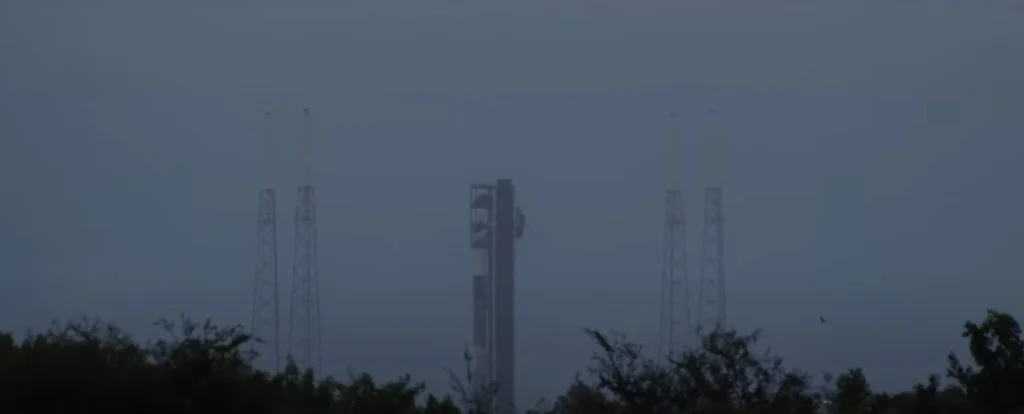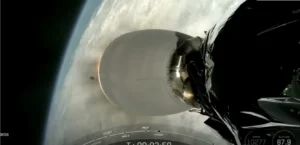SpaceX Launches ESA’s Hera Missi0n: A New Era in Planetary Defense
SpaceX successfully launches ESA’s Hera spacecraft to study NASA’s DART impact on asteroids Didymos and Dimorphos. A pivotal moment for planetary defence!
 On October 7, 2024, SpaceX achieved another remarkable milestone by successfully launching the European Space Agency’s (ESA) Hera spacecraft aboard a Falcon 9 rocket.
On October 7, 2024, SpaceX achieved another remarkable milestone by successfully launching the European Space Agency’s (ESA) Hera spacecraft aboard a Falcon 9 rocket.
This mission not only represents a significant step in planetary defence but also showcases the capabilities of modern space technology. The launch took place from Cape Canaveral Space Force Station in Florida at precisely 10:52 AM EDT, marking the beginning of a two-year journey to explore the aftermath of NASA’s Double Asteroid Redirection Test (DART).
Launch Highlights
 The Falcon 9 rocket delivered Hera into interplanetary space approximately 76 minutes after liftoff. During this ascent, the rocket’s upper stage captured striking images of Earth, providing a unique perspective of our planet from space.
The Falcon 9 rocket delivered Hera into interplanetary space approximately 76 minutes after liftoff. During this ascent, the rocket’s upper stage captured striking images of Earth, providing a unique perspective of our planet from space.
The photos depicted Earth as a small blue orb against the vastness of space, emphasizing the distance travelled as the rocket moved toward its intended orbit.
This particular mission was historic for another reason: it was the final flight for the Falcon 9 first-stage booster designated B1061. After completing its 23rd mission, the booster did not have enough fuel to return for a safe landing, concluding its operational life.
John Insprucker, a principal integration engineer at SpaceX, paid tribute to this workhorse during the launch webcast, stating, “Farewell, 1061, and we thank you.”
Hera’s Mission Objectives
 Hera is designed to study the binary asteroid system consisting of Didymos and its smaller moonlet Dimorphos. This mission serves as a follow-up to NASA’s DART mission, which intentionally impacted Dimorphos in September 2022.
Hera is designed to study the binary asteroid system consisting of Didymos and its smaller moonlet Dimorphos. This mission serves as a follow-up to NASA’s DART mission, which intentionally impacted Dimorphos in September 2022.
The DART mission successfully altered Dimorphos’ orbit around Didymos, demonstrating humanity’s ability to change an asteroid’s trajectory—a crucial capability for planetary defence. The primary objectives of Hera include:
- Assessing DART’s Impact: Hera will investigate the crater created by DART’s collision with Dimorphos and confirm changes observed through remote sensing and modelling.
- Studying Orbital Dynamics: The spacecraft will analyze how DART’s impact affected Dimorphos’ orbit around Didymos.
- Utilizing Cubesats: Hera is equipped with two CubeSats that will assist in gathering data during its journey.
The Importance of Planetary Defense
 The Hera mission is vital for understanding how to protect Earth from potential asteroid threats. With over half a million known asteroids in our solar system—many of which are classified as near-Earth objects—the need for effective planetary defence strategies has never been more pressing.
The Hera mission is vital for understanding how to protect Earth from potential asteroid threats. With over half a million known asteroids in our solar system—many of which are classified as near-Earth objects—the need for effective planetary defence strategies has never been more pressing.
By studying Dimorphos and the effects of DART’s impact, scientists hope to refine techniques for redirecting asteroids that may pose a danger to our planet.
Journey Ahead
After its launch, Hera will embark on a two-year journey that includes a flyby of Mars in 2025 for a gravity assist before reaching its target in late 2026. During this time, Hera will collect valuable data that could inform future missions aimed at asteroid deflection and planetary defence.
The spacecraft itself weighs approximately 1,081 kilograms and was originally intended to be launched aboard an Ariane 6 rocket. However, due to delays with that program, ESA opted for SpaceX’s Falcon 9 as an alternative launch vehicle. This adaptability underscores the growing reliance on commercial spaceflight capabilities for scientific missions.
Conclusion
The successful launch of ESA’s Hera spacecraft aboard a SpaceX Falcon 9 rocket marks a significant advancement in our understanding of planetary defence and asteroid dynamics.
As we look forward to Hera’s arrival at Didymos and Dimorphos in late 2026, this mission serves as a testament to international collaboration in space exploration.
With Hera set to investigate the effects of DART’s impact and refine our approaches to asteroid deflection, humanity takes another step toward safeguarding Earth from potential cosmic threats.
The intersection of technology and science continues to drive us forward into uncharted territory, promising exciting discoveries that could shape our future.
